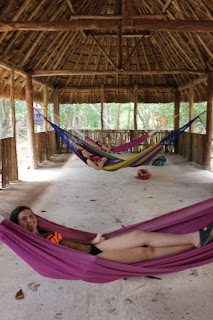Before our next adventure began in the community of Yaxunah,Yaxcabá,Yucatán, we first visited the traditional pottery studio “Najil Kat” belonging to the family Espadas Xooc, in Uayma. Here, the students had the chance to explore the diverse materials and traditional techniques that have been passed down from generation to generation in this family of artists. With the help of Virgilio, we learned about the many types of local soil and clay that are mixed to make a diverse range of creations like vases, plates, mugs, toys, musical instruments, incense holders and more. As part of the workshop, each student sculpted their own little artistic creation, exploring their creativity and the skills necessary to work with the clay. Similar to the time spent in the city of Mérida, the families in Yaxunah are an invaluable aspect for the students to settle into the rhythm of everyday life. The arrival to Yaxunah marks the beginning of a beautiful new family relationship. Students can make s...
























